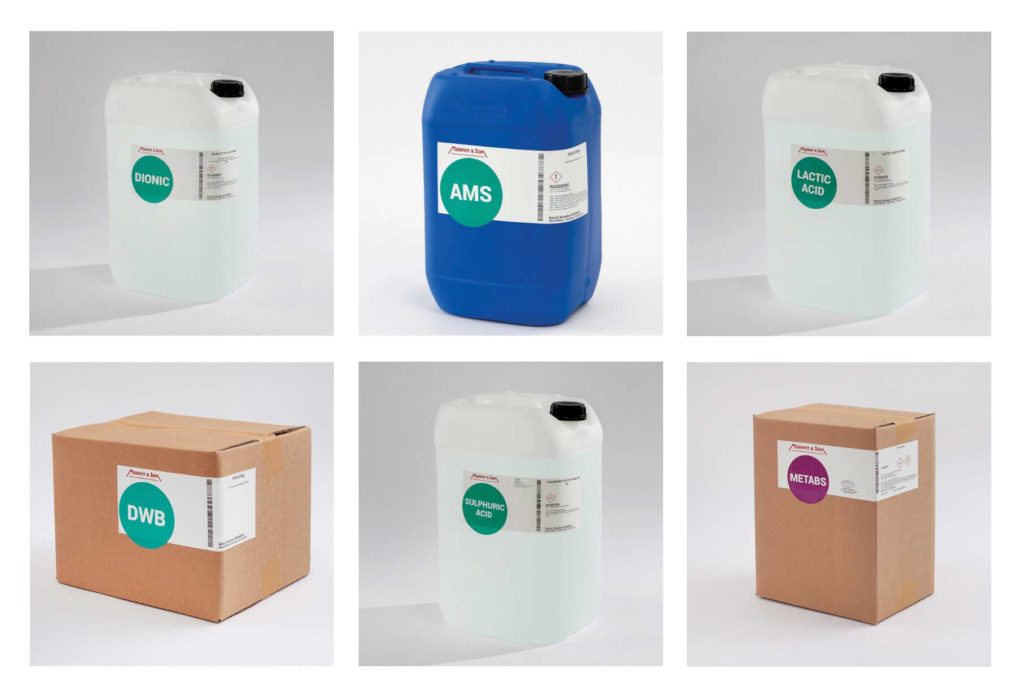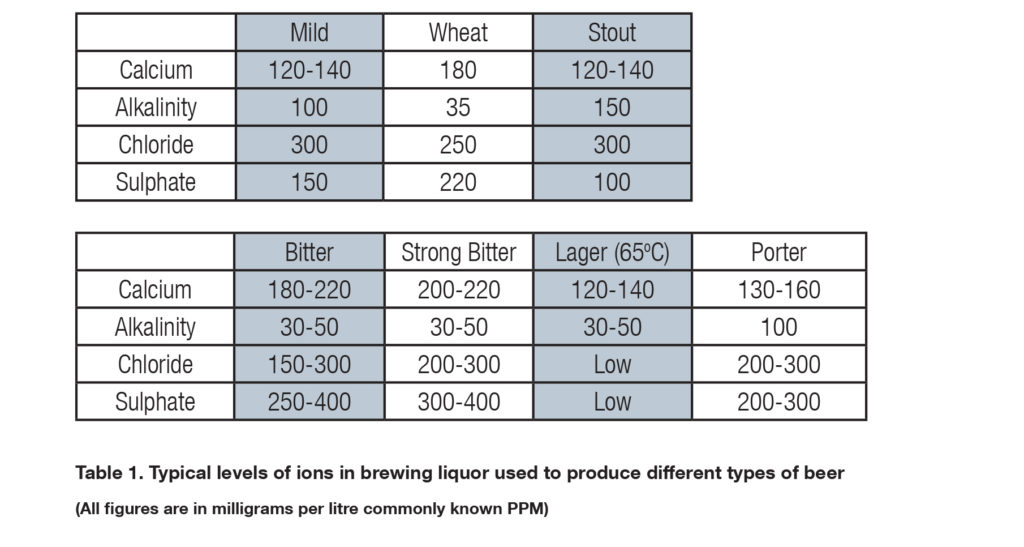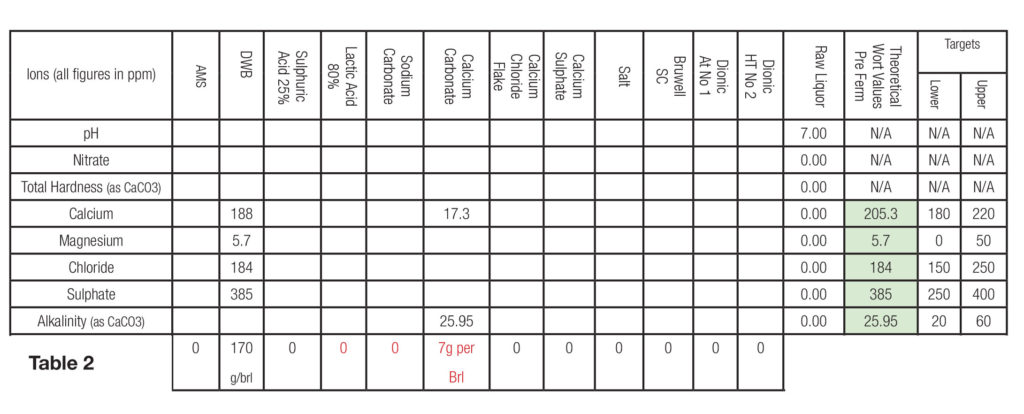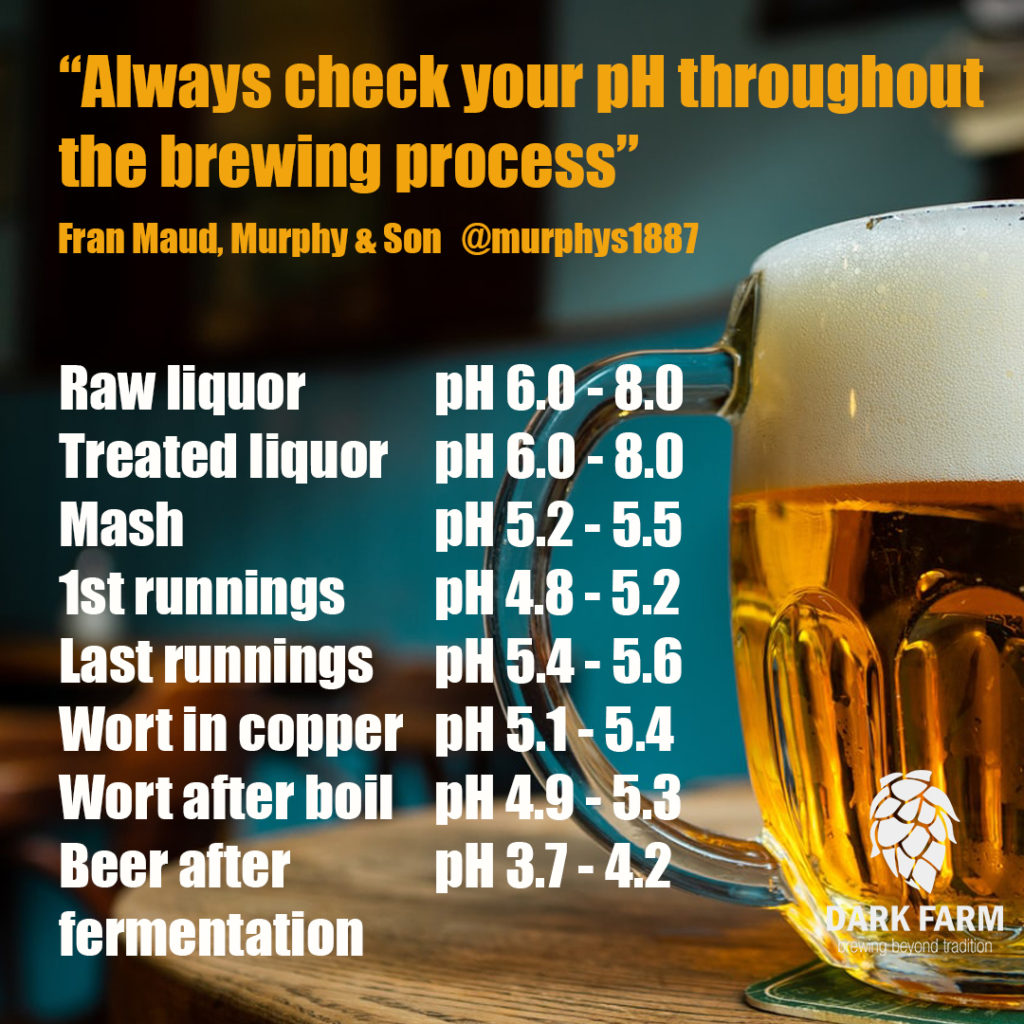As important as liquor treatment is in homebrewing, it’s fair to say that it can seem a tricky process. But it is so worth the effort if you want to brew better beer at home. Frances Maud from Murphy & Son helps us up our homebrew results in this awesome Q&A. Major thanks to Fran for her awesome answers and to our community for their great Qs!
Why is water treatment necessary?
Question by Daniel Burke
FRAN MAUD:
There are many reasons as to why water treatments are necessary, some are listed below:
- By concentrating on the alkalinity (Calcium Carbonate) and Calcium, mash pH can be controlled within a target range to ensure sufficient enzymatic activity and achieve desired pH of downstream wort and beer.
- Calcium from liquor treatments promote the removal of oxalate (a molecule found in malt). Oxalate is responsible for increased chances of spoilage, gushing in beer and beerstone.
- Liquor treatments prevent excessive pH rise during sparging to minimize extraction of harsh tannins.
- The liquor treatment salts ensure there is enough calcium in the fermentation vessel for yeast flocculation.
- To maintain low temporary hardness of water to reduce chalk build-up.
Is liquor treatment necessary for homebrewing?
“I have never really done anything but put Camden tablet overnight and maybe a spoon of gypsum. I have had some decent brews – have I just got lucky or is there any real benefit on a small scale?” – Ian Thirkill
FM: You are on to a winner if your beer tastes pleasant, has an appetising appearance such as clarity and colour and is infection free. But there are always room for improvements.
On a small scale without having to deal with paying customers, cost of raw materials, profit margins etc. this can be achievable and stress free, but if the drinker wants consistency in their beers you may start to find it more difficult to achieve.
Even though your beers are good they can be better. The list of benefits of liquor treatments is endless but here are just a few:
- Reduces the pH during mashing and wort boiling which improves enzyme activity
- Promotes the precipitation of unwanted proteins in the kettle, hop back or whirlpool
- Improves health and vigour of the yeast
- Improves extract yield and fermentability
- Reduces risk of infection
- Reduces extraction of undesirable silicates, tannins and polyphenols
- Reduces beerstone and can prevent gushing in beer
- Reduces colour formation in the copper
- Improves beer fining performance
- Promotes head retention on beer
- Adds Chloride which impart palate fullness
- Adds Sulphate which gives beer a drier and more bitter effect
What are you trying to remove and what do you add?
Question by Daniel Burke
FM: By adding dry salts, we are trying to add Calcium to mainly help control pH, Sulphate to improve mouthfeel and Chloride to improve sweetness.
By adding an acid treatment, we are trying to reduce alkalinity. We express alkalinity as calcium carbonate.
What’s the best liquor adjustment to start working with?
“I’m keen to get into water treatment, but I want to make small adjustments first before doing lots. What’s the best adjustment to start working with in order to build up experience with water treatment?” – David Jack
FM: Adding just a small amount of liquor treatment as opposed to the full recommended rate wouldn’t be ideal as it would result in an incorrect balance of ions. Therefore, your beer will probably end up worse off than improved.
A good starting point would be to try one beer style first and add the full recommended amount of treatment. A bitter style would be ideal for this.
Check your previous brews for pH’s throughout the process, head retention, taste and carbonation. Then see the difference in your new technique – you won’t be disappointed, it will give you confidence to stretch to other beer styles.

Local water profiles & brewing
“I see a lot of information about what local water profiles are like in places that brew beers, however, we know they are likely treating their water too. I’d be interested in what place doesn’t treat their water and why; how does that translate through to the beer they brew.”
– Stuart Hardman
FM: Water authorities are improving their water management year by year; however not to the benefit of the brewer. For example, during times of droughts and floods, they find alternative sources and blend water profiles.
Water authorities also treat their water differently in the summer and the winter to improve the potability, therefore water profiles change. Water from Burton these days, doesn’t have the traditional profile it had back in the day. Therefore, even breweries in Burton must treat their water. Ironically, they must Burtonise their water! Theoretically, most brewers in most regions need to Burtonise their water, no matter where they are from.
RO water treatment for different beers
“Please can you give general info of what and how much to add to RO (Reverse Osmosis) water mainly for IPA and Weiss beer? Thank you!” – Mordechai Jana
FM: The following table shows typical levels of ions in brewing to produce different types of beer. For an IPA, we would look at the figures in the Bitter column, and the figures in Wheat for the Weiss beer.
These figures are guidelines and you can tweak your levels. For example, if you are producing a hoppy IPA, you may want a sweeter profile; therefore, you may want to “up” your Chloride results and lower your Sulphate making it a Chloride forward profile.

If RO is successful and we assume the results of Calcium, Sulphate, Chloride and alkalinity are very low or not present then we can focus on adding the relevant treatments.
In this case, you wouldn’t need an acid treatment as there is no alkalinity to remove. You will however need to add Calcium Carbonate as the alkalinity needs to be, for an IPA, around 20-60 ppm.
You would also need add to either DWB (Dry Water Burtonisation) or a mixture of Calcium Chloride and Calcium Sulphate which contributes Calcium, Sulphate and Chloride, and for an IPA. The target column in table 2 demonstrates this profile.

With the help of table 2, you can see how much DWB is needed to add Calcium levels by 188ppm, Magnesium by 6.7ppm, Chloride by 184ppm and Sulphate by 385ppm and how much Calcium Carbonate is needed to add Calcium Carbonate and Calcium.
Sulphate/Chloride ratio for hoppy beers
“What’s the best Sulphate/Chloride ratio for hoppy beers? I thought that a higher amount of Chloride emphasised malt/sweetness, and higher Sulphate hoppy/dry. I have seen conflicting reports in groups so I am not sure.” – Ian Benfell
FM: It’s entirely up to you and how you want your final brew to taste hence there are differing reports. It is good to play around. I always recommend a Chloride forward profile (higher amount of Chloride than Sulphate) if the beers are hoppy and more sweetness is required.
When to add water treatments
‘Is it worth splitting adjustments to mash and sparge water, or just mash? I’m also interested in finding out why some brewers adjust mash water but only add certain additions at boil stage (like salt).’ – Rich Perks
FM: We always recommend that you add acid treatments to just the water; the rate is per all the water you are using including the sparge.
The powdered products go in with the grist, and the rate is per how much beer you are brewing. If your recommended rate is quite high (over 95g/hl) and you are worried that some of the powdered products will not dissolve fully you can add 1 /3 of the rate during sparge so the product is evened out.
How often to test your brewing water
“Does chemical analysis vary from day to day? If so, do adjustments also vary?” – Roderick Carroll
FM: Every source of water has its unique ionic breakdown which tends to stay consistent, unless tampered with. If your water authority changes your water, then you will need to know its ionic breakdown to be able treat it accordingly. If water authorities blend their sources of water, you will have to have another analysis performed. It is recommended to test your water’s alkalinity each time you brew, by using an alkalinity testing kit.
Quick hack for adjusting pH in homebrewing
“If you overshoot to get your pH, how do you rectify it?” – Roderick Carroll
FM: If your mash is below pH 5.2 then I recommend a small amount of Sodium Bicarbonate and then retest until it is 5.2.
This technique is just used as a trouble shooter as it will not provide the best results, therefore it is not recommended to use as a substitute to using liquor treatments.
Ideal mash pH in homebrewing
“Mash PH, what’s the best range?”- Ian Benfell
FM: Ideal mash pH is debatable and depends on what you want to achieve…
Brewing scientists have different opinions:
- Bamforth: 5.6-6.1 maximizes extract and fermentability, but 5.0-5.5 maximizes soluble Nitrogen and FAN2. Most mashes are 5.3-5.58.
- Kunze and Narziss: 5.5 is optimal for starch conversion, but 5.2-5.4 is ideal for beer flavour and stability 9,10.
- DeLange: “The biggest single improvement in my brewing in the last 5 years or so came when I started actively controlling pH to between 5.3 and 5.4.”
Using local water reports
“I live in South Yorkshire and use tap water; I adjust based on my local water report. What is the better option to remove Chlorine: carbon filter or pre-boil the whole 30 litres the night before with 1/2 Campden tablet? (I currently pre-boil, I don’t have a filter)” – Ian Benfell
FM: Water reports from Water Authorities do provide accurate results for the water tested at the time but be careful that the water you are using currently is associated to that water on the report, water reports can be quite dated.
For 30 litres of water I think using just Camden tablets or Metabs is quite feasible and should do the trick.
When to add your treatments
“When is it best to treat the water? Pre-Mash in, start of Mash, Middle of Mash?” – Ian Benfell
FM: It always important to add acid treatments to the water and salts to the grist at pre mash stage.
Why you need to measure pH in homebrewing
“What changes are noticeable in the Mash & Beer at the extremities of the specified PH range?” – Ian Benfell
FM: There are many issues caused by incorrect pH’s in the brewing process. Here are some examples:
- Stuck fermentations and low extract are caused because enzyme activity wasn’t at its best due to incorrect mash pH.
- Harsh aftertaste if pH is too low.
- Beer being prone to microbiological spoilage if pH is too high.
Fran's Top Tip
“Always check your Ph throughout the brewing process. You can use a pH meter to check your alkalinity for more accuracy. Need a pH meter? Check out our pH and Alkalinity section of our online shop at www.murphyandson.co.uk”
.

Learn more about Murphy & Son and browse their range of brewing treatment products and lab analyses over at www.murphyandson.co.uk
Follow Murphy & Son on social media:
Twitter: @MurphyAndSonLtd
Facebook: @murphyandson
Linkedin: Murphy & Son Ltd
Instagram: @murphys1887
[Beer image: Radovan/Unsplash. Feature image: Vishal Banik/Unsplash]

